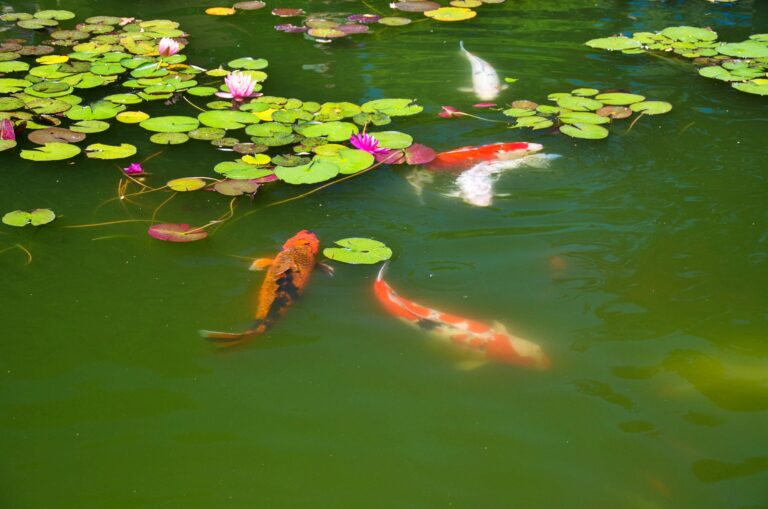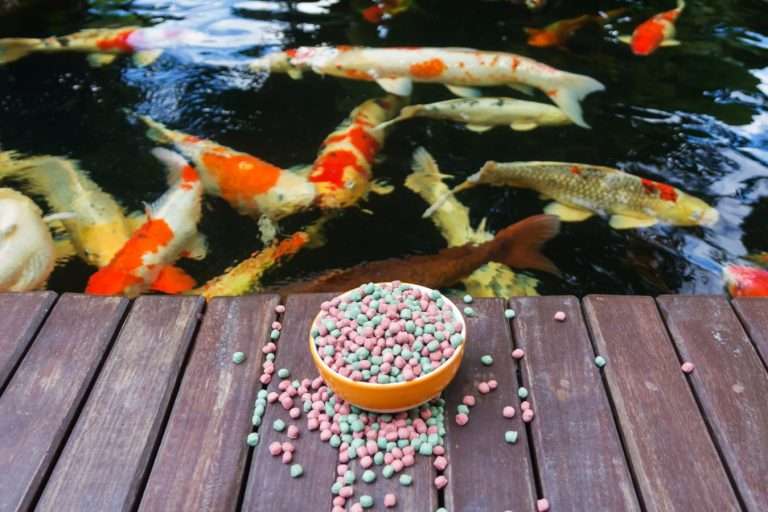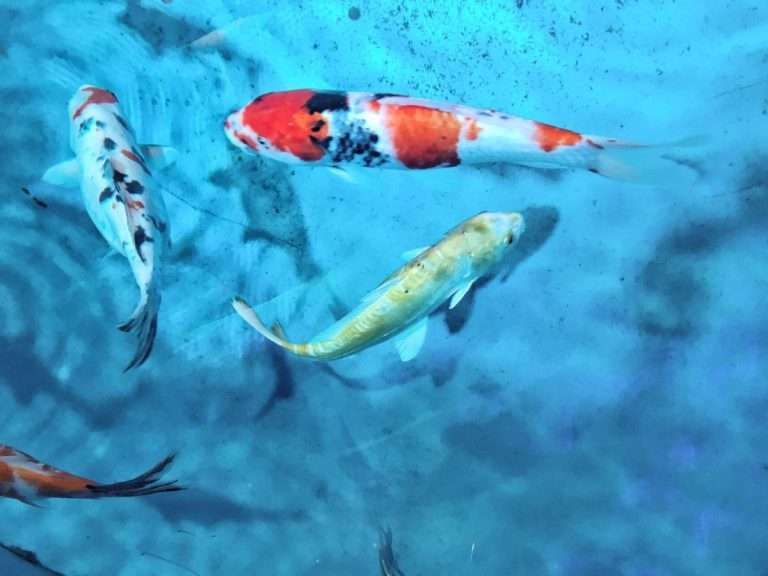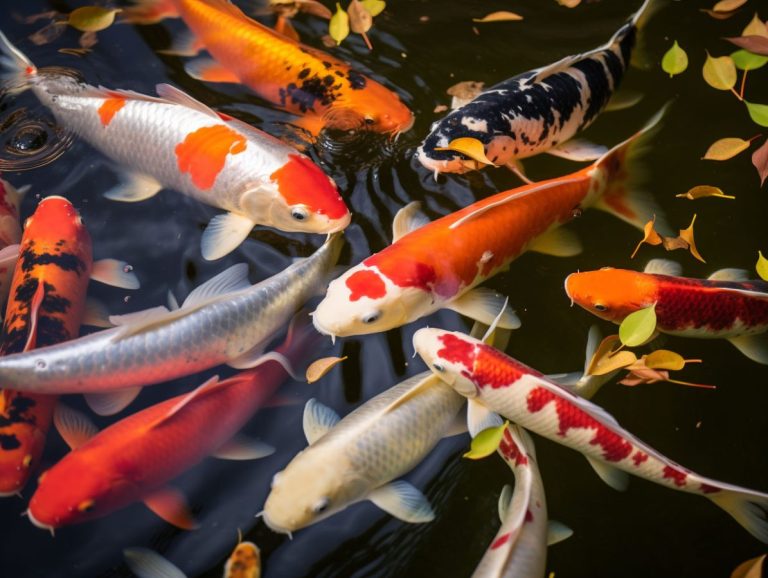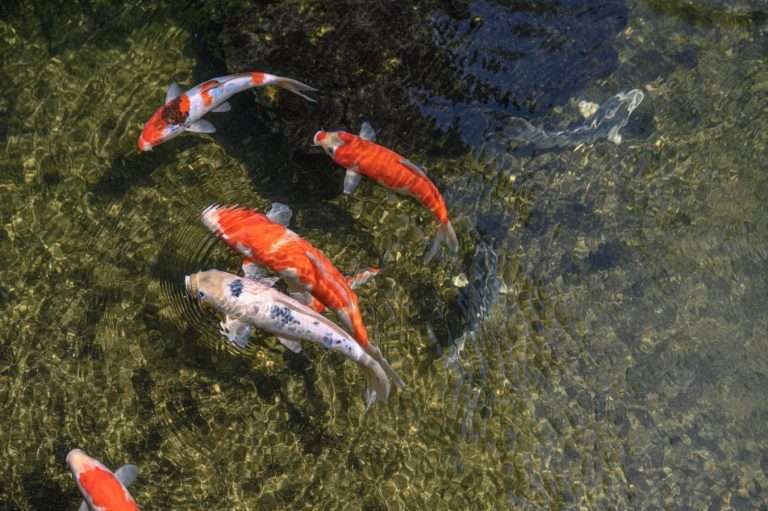How Big Do Koi Fish Get?
You probably know that Koi are large fish, but how big do Koi fish get? With their beautiful patterns and vibrant colors, they are truly majestic creatures. Not only are they visually stunning, but they can also grow to be incredibly large.
Koi fish have been around for centuries, with their records as far back as ancient China. They come in many different breeds and sizes, making them popular among aquarists worldwide.
After reading this article, you’ll understand how big these creatures can get. Many factors, from genetic to environmental, influence how large a Koi can become.
Overview Of Koi Fish
Koi fish are a popular pet fish. They come in various sizes and colors, making them attractive and fun to care for. Koi are also hardy creatures that can live up to 25 years in the right environment.
Koi originated in Japan, bred to represent good luck and fortune. Today, they are kept all over the world in both outdoor ponds and indoor aquariums. They are omnivores, meaning they eat both plant-based and animal-based foods. In addition to their diet, Koi need plenty of oxygenated water to stay healthy.
Koi come in a wide range of sizes, from tiny fry measuring just a few inches long to giant specimens reaching up to three feet or more. While some koi enthusiasts prefer smaller fish for their tanks or ponds, others opt for larger varieties for their impressive size and beauty. No matter what size koi you choose, it’s important to provide them with proper care so they can thrive.
How Old Do Koi Fish Get?
The average Koi can reach up to 3 feet long and weigh about 35 pounds. However, the largest recorded Koi was more than 6 feet long and weighed over 200 pounds!
Koi are known to be hardy fish, but they do require proper care to grow to their full potential. Koi growth is highly dependent on their environment and diet. In an ideal setting with high-quality food, Koi can grow quickly and reach impressive sizes in just a few years. In less-than-ideal conditions, koi may take longer to get full size or not reach it.
The life span of a koi depends on its environment and health. Poor water quality or inadequate nutrition can lead to disease or stunted growth, shortening the life span of the fish. On the other hand, with regular maintenance and good care, Koi have been known to live for over 100 years. Allowing your koi fish plenty of room for swimming and providing a healthy diet will help them reach their maximum lifespan and full size.
How Big Do Koi Fish Get?
The size of a koi fish can be affected by various factors. First, the type of Koi can significantly impact its size. Some species grow much larger than others, with some varieties reaching up to three feet in length. Koi kept in ponds with ample space, and good water quality will often reach larger sizes within their lifespan than those kept in tanks. The diet of the Koi can also influence its size.
Typical Lengths & Weights
An average adult koi can grow between 2 and 4 feet long, although some varieties may be even larger. How heavy do koi fish get can vary greatly depending on the type and size? A medium-sized koi typically weigh around 10 to 15 pounds, but some varieties may reach more than 25-30 pounds.
Koi are often compared to other fish species, such as goldfish, which tend to remain much smaller. While goldfish rarely exceed 12 inches in length, Koi can grow significantly larger and live for decades if properly cared for.
The Biggest Recorded Specimens
The largest documented Koi was a female caught in Japan in 1977 that measured an astounding 4 feet 11 inches long and weighed a whopping 90 pounds! This particular Koi was owned by the mayor of Hiroshima and was ten years old when caught.
In addition to this impressive feat, another koi from Japan named ‘Hanako’ was recorded as having grown to a length of 3 feet 8 inches and weighing 55 pounds. This particular specimen is legendary among koi enthusiasts for its remarkable size.
Breeding Techniques To Maximize Size
Breeding techniques can be used to maximize the size of koi fish. Selecting larger parents for breeding is a great way to start. This will ensure that the offspring inherit some of the genes from their parents. Moreover, crossbreeding different varieties of Koi can also lead to hybrid offspring with large size potentials.
It is important to note that while these techniques may increase the size of koi fish, they cannot guarantee it. Ultimately, genetics play a significant role in determining how big they get and how quickly they grow. However, using breeding techniques, adequate care, and maintenance can give them an advantage in developing to their full potential.
Koi size by age can be tricky, but a few clues can help. One way to tell the age of a koi fish is by looking at its size. Generally speaking, the bigger the Koi, the older it is.
Another way to tell how old a koi is is by examining its scales. As koi age, their scales become thicker and more prominent. In addition, the colors on their scales may become deeper and richer as they mature. If you look closely at a koi’s scales, you may also notice small diamond shapes or bumps called koibito, which are unique to each fish and form as they age.
Environmental Conditions For Growth
Koi fish growth depends on the environmental conditions they are kept in. For Koi to reach their full potential size, they need an environment with plenty of oxygen, clean water, and adequate food.
Providing a large enough pond is one way to ensure that your Koi will have plenty of space for growth. The bigger your pond is, the more room there will be for your Koi to grow. If you do not have access to a large pond, regular water changes can help maintain good water quality and provide the necessary oxygen levels for optimal growth.
Keeping these environmental conditions in mind will help ensure that your koi fish reach their fullest potential size and remain healthy and strong. You can watch your koi thrive in its unique environment with dedication and care!
Different Types Of Koi Fish
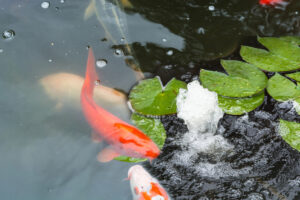
Koi fish come in various colors and patterns, making them an attractive addition to any pond or aquarium. There are many different varieties of Koi, each with its unique characteristics and features. The most common types are the Standard Koi, Butterfly Koi, Longfin Koi, Ghost Koi, and Ogon Koi.
Standard Koi is the most popular type of Koi and often has bright colors such as red, white, yellow, black, and blue. Butterfly Koi have long flowing fins resembling a butterfly’s wings and can come in many colors. They typically grow up to three feet in length. Longfin Koi have longer fins than Standard or Butterfly varieties and come in bright colors. These fish usually grow up to three feet in length.
Ghost Koi have very faint coloration compared to other types of Koi and can be distinguished by their white-grey scales. They typically reach a maximum size of four feet long, making them the largest variety of Koi you can find! These fish usually reach a maximum length of two feet, while the Ogon Koi have metallic scales that shimmer like gold when they catch the light.
Keeping Large Koi Fish
Keeping large koi fish can be an enjoyable and rewarding experience but requires much dedication. Large koi fish need more space and resources than smaller ones, so they must have a larger aquarium or pond. The water should be filtered regularly to maintain its cleanliness and quality. It is also important to give enough room for the fish to swim and exercise and plenty of plants and rocks to hide in.
In addition, the water temperature needs to be monitored closely since koi are cold-blooded creatures that do not regulate their body temperatures. The water should also have the proper pH balance to create a healthy environment for the fish. Lastly, feeding large Koi requires careful planning; they need a varied diet of high-quality food such as pellets and live foods like worms or insects.
It’s important to remember that larger Koi need more attention than smaller ones; frequent vet check-ups are recommended to ensure their health and well-being. These majestic creatures can thrive in their aquatic home with proper care for many years.
Frequently Asked Questions
What Is The Best Food To Feed Koi Fish?
For koi fish, the best food can vary depending on factors such as the size of the fish and the season.
Koi should be fed a high-quality pellet or flake food as their main diet. This type of food provides balanced nutrition while also being convenient and cost-effective. Koi may also enjoy treats such as live or frozen brine shrimp, bloodworms, or daphnia, which can be offered a few times a week to supplement the regular diet.
To ensure that your Koi stay healthy and happy, providing them with a well-rounded diet that meets their nutritional needs is essential. During warmer months, when water temperatures are higher, Koi may require more frequent feeding to refuel after increased activity levels. It’s also important not to overfeed them; too much food can improve waste products that pollute tank water and cause health problems for your fish.
Therefore, choosing the right food for your Koi is vital for their well-being and longevity – and understanding what will give them optimal nutrition is critical! With careful consideration of their dietary needs, you can provide your Koi with all the nutrients they need to thrive in their aquatic environment.
How Do I Know If My Koi Fish Is Healthy?
The first thing to consider is their physical appearance. A healthy koi fish should have bright colors, smooth scales, and be active in the water. If your koi fish appears lethargic or its colors seem dull, this could indicate a health issue. Additionally, check for any signs of disease, such as lesions or discoloration; this could mean your fish needs veterinary care immediately.
Another way to tell if your koi fish is healthy is by looking at its behavior. A healthy koi should be swimming around actively and eagerly approaching food. Pay attention to their fins: if they are clamped close to the body or appear frayed and tattered, this could indicate stress or illness.
Being aware of these signs can help you identify when something might be wrong with your Koi so that you can quickly rectify the situation. You can keep your Koi happy and healthy for years with thoughtful care!
Are Koi Fish Aggressive Towards Other Fish?
The answer is yes; Koi can be aggressive in certain situations. As with any fish, aggression is often a response to stress or overcrowding. If a tank or pond has too many koi competing for the same resources, they may become territorial and attack each other. This behavior can be seen more often in larger koi than smaller ones. Additionally, koi are natural predators, meaning they may go after smaller aquatic animals like snails and shrimp.
It’s important to note that koi aggression usually only occurs when there is a lack of space or food sources. Therefore, providing plenty of swimming room and nutritious food will minimize potential aggressive behavior among your fish. Additionally, keeping different types of species together in the same tank or pond could help reduce the risk of fighting between your Koi as each species may establish its territory within the habitat.
How Often Should I Change The Water In My Koi Pond?
Koi ponds can be a beautiful addition to any outdoor space and provide years of enjoyment if cared for properly. Regular maintenance of your koi pond water is essential for keeping your fish healthy and happy.
When performing a water change, it is essential to use dechlorinated or conditioned tap water so as not to harm your fish. Furthermore, you should always check the pH level of each new batch of water before adding it into the pond; ideally, it should be between 6 and 8 pH units on a scale from 0-14, with seven being neutral. Checking these levels regularly will ensure that your koi remain healthy and safe.
Are Koi Fish Suitable For Aquariums?
How big do koi fish get in a tank? This is an essential question if you consider adding koi to your home. While they’re beautiful and captivating creatures, these large fish need plenty of space to thrive and grow, so knowing what kind of tank you’ll need before getting started is important.
If you’re set on having Koi in a smaller aquarium, there are some things you should consider first. First, the maximum number of fish in an aquarium should be based on size; overcrowding can lead to problems such as disease and stunted growth. Secondly, regular water changes are essential for keeping Koi healthy; weekly water changes will help keep the ammonia levels down and ensure that your fish have enough oxygen.
Finally, it’s important to choose hardy species with bright colors as they tend to fare better in smaller aquariums with less filtration than other varieties.
Conclusion
In conclusion, Koi fish can be an excellent addition to any home aquarium or pond. They are beautiful, highly adaptable fish and can grow large depending on the species. They need a balanced diet of high-quality food and regular water changes to ensure they remain healthy and happy. Additionally, you must provide you don’t overcrowd your tank with too many Koi, as they may become aggressive toward one another.
Overall, proper care is key to keeping your Koi healthy and happy. If you take good care of your Koi, they will reward you with years of beauty and joy! With the right environment and diet, these fish can thrive in both ponds and aquariums of all sizes.
So go ahead and give your Koi the love and care they need; you won’t regret it!
Originally posted 2023-03-08 08:22:41.





